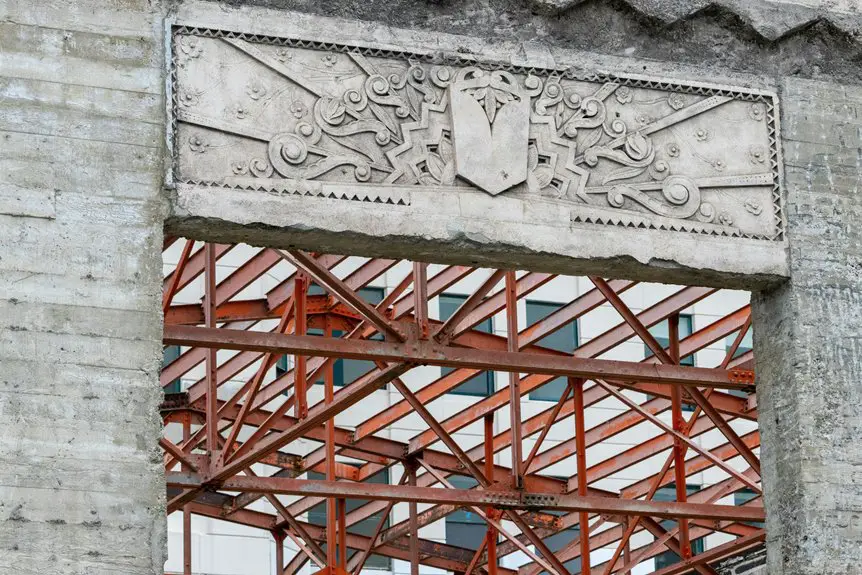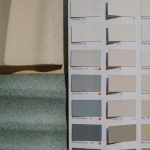When choosing scrim for reinforcement, consider your project’s strength, weight, and budget needs. Polyester scrim is cost-effective and lightweight but less strong. Fiberglass offers better strength and durability with moderate cost and weight. Carbon fiber scrim provides exceptional strength-to-weight ratio and stiffness, ideal for high-performance tasks, but it’s pricier. Each type handles environmental factors differently, so pick based on exposure and handling ease. Keep exploring to find which fits your project’s demands best.
Table of Contents
Key Takeaways
- Polyester scrim is cost-effective, lightweight, and offers moderate strength with good chemical and UV resistance for budget-conscious reinforcement needs.
- Fiberglass scrim provides higher tensile strength, excellent moisture and heat resistance, and dimensional stability for balanced durability and performance.
- Carbon fiber scrim delivers exceptional strength-to-weight ratio, superior stiffness, and thermal/electrical conductivity, ideal for high-performance, weight-sensitive applications.
- Polyester is best for affordable, flexible reinforcement; fiberglass suits moderate strength with durability; carbon fiber fits critical, high-strength uses despite higher costs.
- Selection depends on strength needs, budget limits, environmental exposure, and compatibility with manufacturing processes for optimal composite reinforcement.
Understanding Scrim and Its Role in Reinforcement
Anyone working with composite materials quickly learns that scrim plays a crucial role in reinforcement. You rely on scrim as a lightweight, open-weave fabric that adds strength without excessive weight.
It acts as a framework, helping distribute loads evenly across the composite, which prevents weak points and improves durability. When you integrate scrim into your composite layup, it holds layers together, controls dimensional stability, and resists tearing or deformation during manufacturing and use.
You’ll find scrim made from various fibers, each designed to enhance specific characteristics tailored to your project’s needs. By understanding scrim’s function as a reinforcing mesh, you can optimize your material choices and improve the performance and lifespan of your composite products.
Key Properties of Polyester Scrim
When selecting scrim for your composite project, understanding the specific properties of polyester scrim can help you make an informed choice.
Polyester scrim offers high tensile strength and excellent dimensional stability, meaning it resists stretching or shrinking under stress. It also has good resistance to moisture, chemicals, and UV exposure, which helps maintain its integrity in various environments.
Polyester scrim combines high tensile strength with resistance to moisture, chemicals, and UV for lasting durability.
You’ll find polyester scrim lightweight yet durable, providing effective reinforcement without adding unnecessary bulk. Its weave structure allows for uniform load distribution and easy handling during fabrication.
While it doesn’t match the stiffness of fiberglass or carbon fiber, polyester scrim’s balance of strength, flexibility, and resistance makes it a versatile option for many reinforcement needs.
Advantages and Applications of Polyester Scrim
You’ll appreciate polyester scrim for its cost-effectiveness and wide availability, making it a practical choice for many projects.
Its flexibility and durability help it stand up to various industrial demands without compromising performance.
Let’s explore the common applications where polyester scrim really shines.
Cost-Effectiveness and Availability
Although polyester scrim may not boast the highest strength compared to fiberglass or carbon fiber, it stands out for its cost-effectiveness and wide availability. If you’re working on projects with budget constraints or need quick access to materials, polyester scrim is your go-to choice. Its production is less energy-intensive, making it more affordable, and it’s available from numerous suppliers worldwide.
| Factor | Polyester Scrim |
|---|---|
| Cost | Low |
| Supplier Availability | High |
| Production Speed | Fast |
| Market Demand | Consistently strong |
You’ll find polyester scrim ideal for applications like packaging, construction, and lightweight reinforcement where cost and availability matter more than ultimate strength.
Flexibility and Durability
Because polyester scrim combines flexibility with strong durability, it fits perfectly in applications that demand both resilience and adaptability. You’ll find it can bend and stretch without breaking, which means it handles stress and movement better than more rigid materials. This flexibility lets you use polyester scrim in environments where materials need to absorb impact or slight shifts without losing integrity.
At the same time, polyester scrim resists wear, tear, and environmental factors like moisture and UV exposure. You won’t have to worry about it degrading quickly, even with frequent use or harsh conditions.
Common Industrial Uses
The balance of flexibility and durability makes polyester scrim a go-to choice across various industries.
When you work with packaging, you’ll find polyester scrim reinforces bags, preventing tears and extending product life.
In construction, you can use it to strengthen roofing membranes or house wraps, offering resistance to weather and wear.
Printing and wallpaper manufacturers rely on polyester scrim to boost material stability without adding bulk.
If you’re in the automotive sector, polyester scrim helps reinforce interior panels and upholstery, combining lightweight strength with flexibility.
Its resistance to moisture and chemicals means you can trust it in environments where other materials might fail.
Core Characteristics of Fiberglass Scrim
Fiberglass scrim offers a unique combination of strength and flexibility that makes it ideal for reinforcing various materials. When you work with it, you’ll notice its high tensile strength, which helps resist tearing and stretching under stress.
It’s also lightweight, so it won’t add unnecessary bulk to your projects. Additionally, fiberglass scrim resists moisture, chemicals, and temperature changes, ensuring durability in harsh environments.
Its woven mesh structure provides excellent dimensional stability, so it maintains shape without warping. You’ll find it’s non-combustible too, adding fire resistance where needed.
Plus, the material doesn’t corrode or degrade easily, allowing long-term strength retention. Understanding these core characteristics helps you choose fiberglass scrim confidently for reinforcement tasks requiring reliability and endurance.
Benefits and Common Uses of Fiberglass Scrim
When you need reliable reinforcement that won’t add much weight, fiberglass scrim delivers exceptional benefits. You’ll appreciate its high tensile strength and resistance to heat, moisture, and chemicals, making it durable in tough environments.
Its lightweight nature guarantees your projects stay manageable without sacrificing support. You can use fiberglass scrim in drywall joints to prevent cracking, in roofing for added stability, and in composite materials to boost structural integrity.
It’s also common in boatbuilding and automotive repairs where strength and flexibility matter. Plus, fiberglass scrim resists corrosion, so it works well outdoors.
Unique Features of Carbon Fiber Scrim
Although carbon fiber scrim shares some similarities with other reinforcement materials, its unique features set it apart for high-performance applications. You’ll find it exceptionally strong yet lightweight, with superior stiffness and resistance to environmental factors. This makes it ideal when durability and minimal weight are vital. Unlike polyester or fiberglass, carbon fiber scrim offers excellent thermal and electrical conductivity, which can be a game-changer in specialized projects.
| Feature | Carbon Fiber Scrim | Comparison to Others |
|---|---|---|
| Tensile Strength | Very high | Higher than polyester, fiberglass |
| Weight | Extremely low | Lighter than both |
| Stiffness | Superior rigidity | More rigid |
| Environmental Resistance | Excellent | Better resistance |
| Conductivity | Thermal & electrical conductive | Unique among scrims |
You’ll appreciate these distinctive qualities when choosing reinforcement.
Performance and Utilization of Carbon Fiber Scrim
You’ll appreciate how carbon fiber scrim offers exceptional strength-to-weight advantages, making it ideal for demanding applications like aerospace and sports equipment.
Its versatility lets you use it in various industries, but you’ll need to weigh its higher cost against performance benefits.
Let’s explore how these factors impact your choice in materials.
Strength-to-Weight Advantages
Since strength-to-weight ratio plays a crucial role in material performance, carbon fiber scrim stands out by offering exceptional strength while keeping weight minimal.
When you use carbon fiber scrim, you get a reinforcement material that delivers high tensile strength without adding unnecessary bulk. This means you can achieve durable, lightweight structures that resist stress and fatigue better than polyester or fiberglass alternatives.
You’ll find that carbon fiber’s superior stiffness-to-weight ratio improves overall efficiency, making it ideal when weight savings matter. Plus, its corrosion resistance guarantees long-term reliability.
Application Areas
Carbon fiber scrim finds its place in a wide range of applications where high performance matters.
When you choose carbon fiber scrim, you’re tapping into its exceptional strength, stiffness, and lightweight characteristics. This makes it ideal for reinforcing materials in demanding environments.
You’ll often see it used in:
- Aerospace components, where every gram counts and durability is critical
- High-performance sports equipment like bikes and tennis rackets
- Automotive parts aiming to reduce weight without sacrificing strength
- Marine applications, including hull reinforcements and sails
Cost Considerations
While the benefits of carbon fiber scrim make it attractive for high-performance uses, cost plays a significant role in whether it suits your project.
Carbon fiber scrim is particularly more expensive than polyester or fiberglass options, which can strain budgets, especially for large-scale applications. However, its superior strength-to-weight ratio often means you can use less material, potentially offsetting some costs.
If your project demands maximum durability and weight savings, investing in carbon fiber could be worthwhile. On the other hand, for less critical uses, polyester or fiberglass scrim might deliver adequate performance at a fraction of the price.
You should carefully weigh your specific performance needs against cost constraints to determine whether carbon fiber scrim is the right choice for your reinforcement requirements.
Comparative Analysis: Strength, Weight, and Cost
When choosing between polyester, fiberglass, and carbon fiber, you need to weigh how each material performs in strength, weight, and cost.
Each scrim type offers unique advantages depending on your project’s demands.
Different scrim types provide distinct benefits tailored to meet your specific project requirements.
- Polyester: Affordable and lightweight but offers moderate strength.
- Fiberglass: Stronger and more durable than polyester, with moderate weight and cost.
- Carbon Fiber: Exceptional strength-to-weight ratio, extremely lightweight, but comes with a high price tag.
- Cost vs. Performance: Polyester suits budget-conscious projects; fiberglass balances cost and strength; carbon fiber excels where performance justifies expense.
Factors to Consider When Choosing the Right Scrim
Before selecting the right scrim, you should consider factors like strength requirements, budget constraints, and the specific environment where the material will be used.
If your project demands high tensile strength and lightweight properties, carbon fiber scrim is ideal, though it’s pricier. Polyester offers a budget-friendly option with decent durability for less demanding applications. Fiberglass strikes a balance, providing good strength and heat resistance at a moderate cost.
Also, think about environmental exposure—fiberglass handles moisture and heat better, while polyester might degrade faster outdoors.
Finally, consider ease of handling and compatibility with your resin or matrix system. By weighing these factors carefully, you’ll choose a scrim that optimizes performance, cost-efficiency, and longevity for your specific reinforcement needs.
Frequently Asked Questions
How Is Scrim Reinforcement Installed in Composite Manufacturing?
You lay the scrim onto the mold, then apply resin to saturate it thoroughly. You’ll press or roll it to remove air bubbles, ensuring strong bonding. Finally, you cure it under heat or pressure for solid reinforcement.
What Environmental Impacts Are Associated With Producing Each Scrim Type?
You’ll find polyester scrim production uses less energy but relies on fossil fuels, fiberglass generates significant emissions and waste, while carbon fiber demands high energy and emits more greenhouse gases, impacting the environment considerably.
Can Scrim Materials Be Recycled or Reused After Use?
You can recycle or reuse some scrim materials, but it depends on the type. Polyester is more recyclable, fiberglass is harder to recycle, and carbon fiber can be reused in certain processes, though it’s often costly.
How Do Temperature Variations Affect Scrim Performance?
You’ll find that temperature changes impact scrim strength and flexibility; higher heat can weaken some materials, while cold may make them brittle. Choosing the right scrim depends on your specific temperature exposure and performance needs.
Are There Health Risks Linked to Handling These Scrim Materials?
You should handle scrim materials carefully because fiberglass can irritate your skin and lungs if inhaled. Polyester and carbon fiber dust might cause allergies or respiratory issues, so always wear protective gear and work in ventilated areas.
- Does Chiffon Fabric Stink - July 15, 2025
- Does Chiffon Fabric Affect the Economy - July 15, 2025
- Does Cotton Fabric Have a Nap - July 15, 2025







